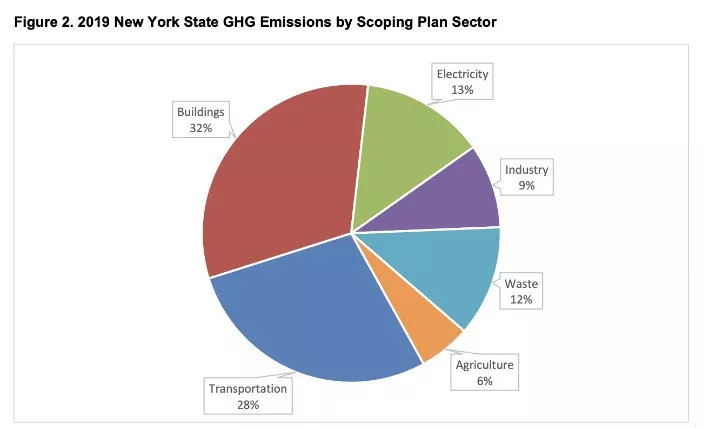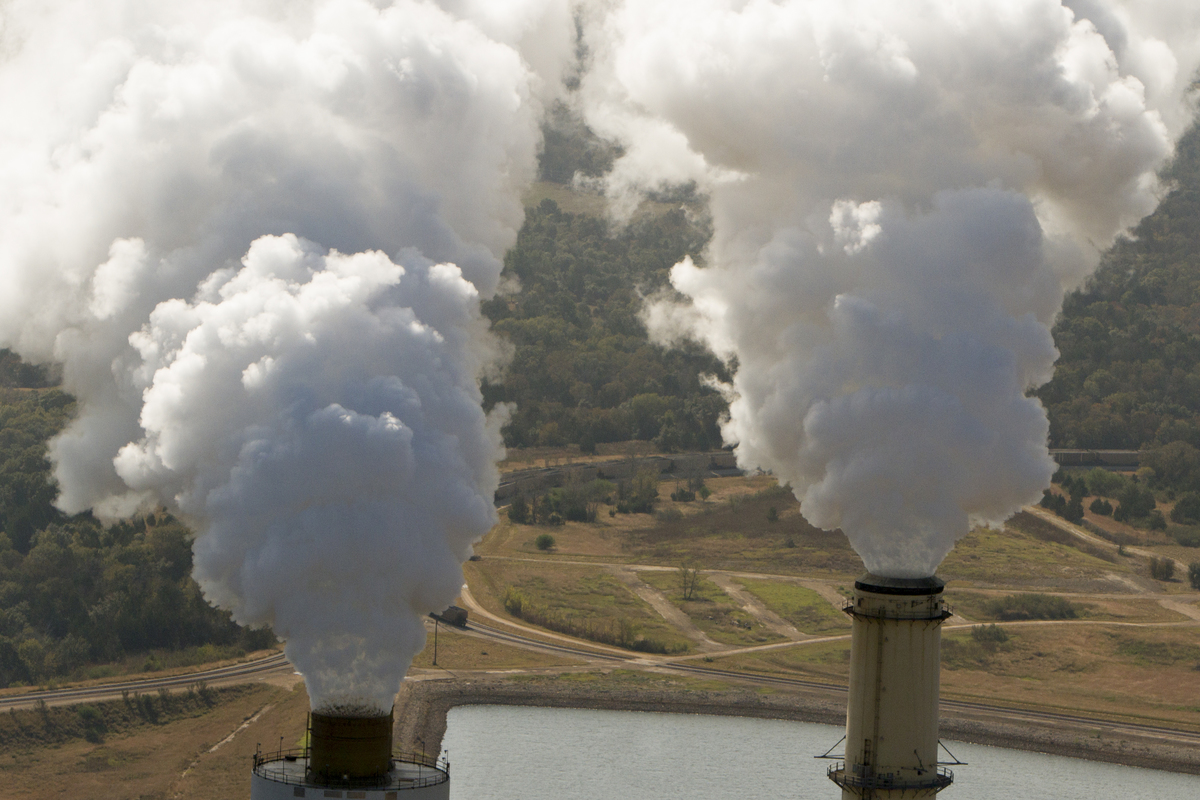In a seeming victory for climate advocates, National Grid in its rate case settlements in 2021 committed to undertake a study to analyze strategies for reducing greenhouse gas emissions from the use of gas it delivers to customers in its service territories to inform its future climate planning in New York. Emissions from buildings—primarily from importing and burning fossil fuels for heating and hot water—are the largest source of climate emissions in New York (32 percent of the state total). National Grid—through its substantial gas service territories in New York City, Long Island, and Upstate New York is one of the biggest contributors to those emissions. The 2019 Climate Leadership and Community Protection Act, or Climate Act, requires New York State to reduce its emissions 40 percent by 2030 and 85 percent by 2050, meaning that utilities like National Grid will have a large role to play in reducing their emissions in the State’s effort to achieve these mandates.

Based on the Company’s settlement commitment, one might expect that the Company would use its study to compare the costs and feasibility of alternative pathways to reduce emissions from its gas delivery business. The results would then, presumably, inform the National Grid’s long-term decarbonization strategy.
However, last spring, before the study kicked off, National Grid released a “Clean Energy Vision” for New York and Massachusetts and began actively promoting it as a historic “path to a more affordable, reliable clean energy future.” (For some background on issues with this “vision,” check out this release about Sierra Club & allies picket of National Grid this spring)
When it got around to designing its climate study, rather than compare several scenarios that achieve equal emission reductions from the Company’s gas businesses, National Grid chose to compare its previously endorsed Clean Energy Vision to two other scenarios that required much deeper cuts in emissions from the gas system– privileging the “vision” with the least impact on both the Company’s emissions levels and its business model.
There are many problems with the Clean Energy Vision, as detailed in Sierra Club’s recent comments and those of others including the Natural Resources Defense Council, but at a very basic level the Vision is flawed because the Company’s underlying assumptions simply don’t pencil out. National Grid uses a faulty study design and unrealistic assumptions to get to the answer it wants, rather than following the best available data and science to find the outcome that’s best for New York. Most glaringly, the Company assumes it can replace all of the fracked gas in its pipes with “green” hydrogen and renewable natural gas (RNG) to dramatically shrink its carbon footprint. But even setting aside all of the environmental and climate concerns associated with these fuels, there’s simply no way to obtain and blend the required amounts of these gases into the current pipeline system.
A recent study by the California Public Utilities Commission confirmed that hydrogen causes embrittlement and blistering of traditional steel pipes and that even plastic (MDPE) pipes show deteriorating performance with increased hydrogen blending, confirming limitations in material integrity for mixtures of 20 percent hydrogen. The California Commission concluded, based on the analyses conducted, that a “systemwide blending injection scenario becomes concerning as hydrogen blending approaches five percent by volume.” Undaunted, National Grid’s Clean Energy Vision relies on piping a 20 percent hydrogen mix through its existing pipes, a recipe for pipeline failure.
Even more concerning, National Grid builds its Clean Energy Vision around the assumption that it is entitled to an outsize share of the nation’s limited supply of less-climate-harmful “renewable” natural gas or RNG (primarily gas produced from biological wastes). Beyond the Vision’s reliance on a highly optimistic gas industry projection of future RNG availability, National Grid assumes the Company is entitled to 7.2 percent of all RNG produced East of the Mississippi. This outlandish claim is apparently based on the Company’s share of residential and commercial gas consumption in the East. But residential and commercial gas account for only approximately one-fourth of actual gas consumption, suggesting that National Grid has overstated its claim to RNG by a factor of four. Moreover, residential and commercial buildings are among the easiest to decarbonize using efficient and available electric heat pumps and therefore the least in need of the nation’s inherently limited supply of lower-carbon RNG.
In addition to being deeply flawed, National Grid’s self-serving “vision” is also, unsurprisingly, out of step with the State’s recommendation on how to achieve its ambitious climate commitments. New York’s Climate Action Council, a 22 member Council created by the Climate Act to make the roadmap for New York to cut its emissions, is poised to release a Scoping Plan on December 19, setting out recommendations for how New York should achieve the State’s ambitious climate commitments. In the buildings chapter of its draft plan, the Council found that “electrification of space and water heating with high efficiency heat pumps is a viable, cost-effective approach to decarbonizing operations for nearly all buildings in New York.” Nevertheless, National Grid’s Clean Energy Vision requires a large fraction of households to install both a gas furnace and an electric heat pump and many to forgo efficient electric heat pumps altogether.
Maintaining two heating systems is expensive and inefficient from an infrastructure perspective. So why is National Grid promoting it? The Company likes its Clean Energy Vision because it maintains the Company’s major money-making asset—the gas pipeline system—largely intact, allowing it to continue to earn a substantial rate of return on all its past and future investments in that system for decades to come.
National Grid’s promotion of its gas assets is not limited to its Clean Energy Vision. The Company has also been funding and is a steering committee member of an astroturf front group called New Yorkers for Affordable Energy, which has a mission “to expand natural gas service.” Since 2016 National Grid has spent nearly $2 million on lobbying, including against numerous pieces of legislation that would facilitate New York’s transition off of fossil fuels
Without regulatory oversight, National Grid will continue to promote an agenda that locks New Yorkers into prolonged reliance on a leak-prone and climate-harmful pipeline system. Despite the obvious methodological flaws and unsupported assumptions with its climate study repeatedly pointed out by advocates, National Grid continues to use it simply as an opportunity to further promote its Vision. That’s why we need the Public Service Commission to hold National Grid accountable to the terms and intent of its settlement commitments, and deliver a study that fairly assess pathways that will deliver real emissions reductions from the gas system at the scale and speed required to meet the Climate Act.
